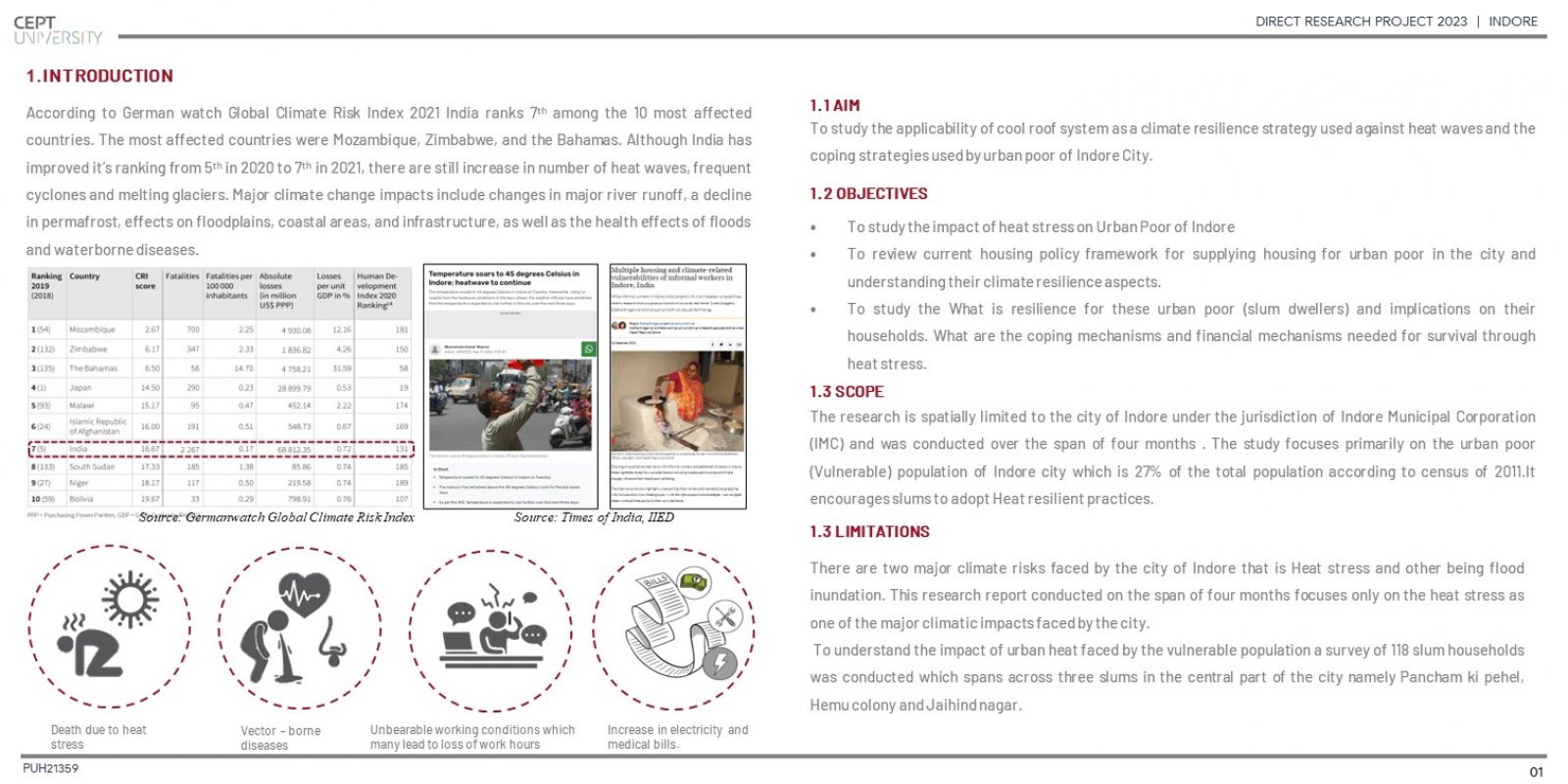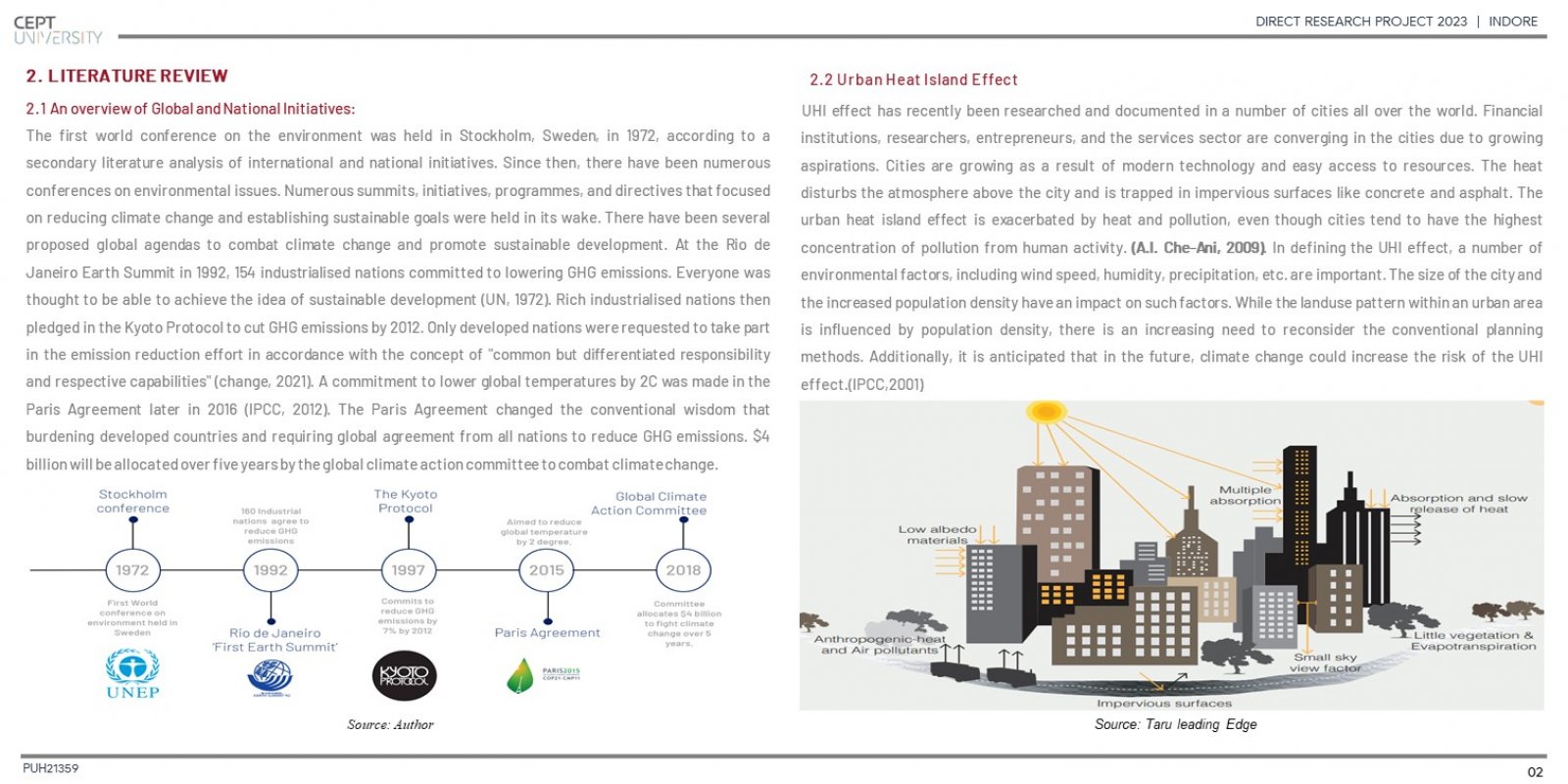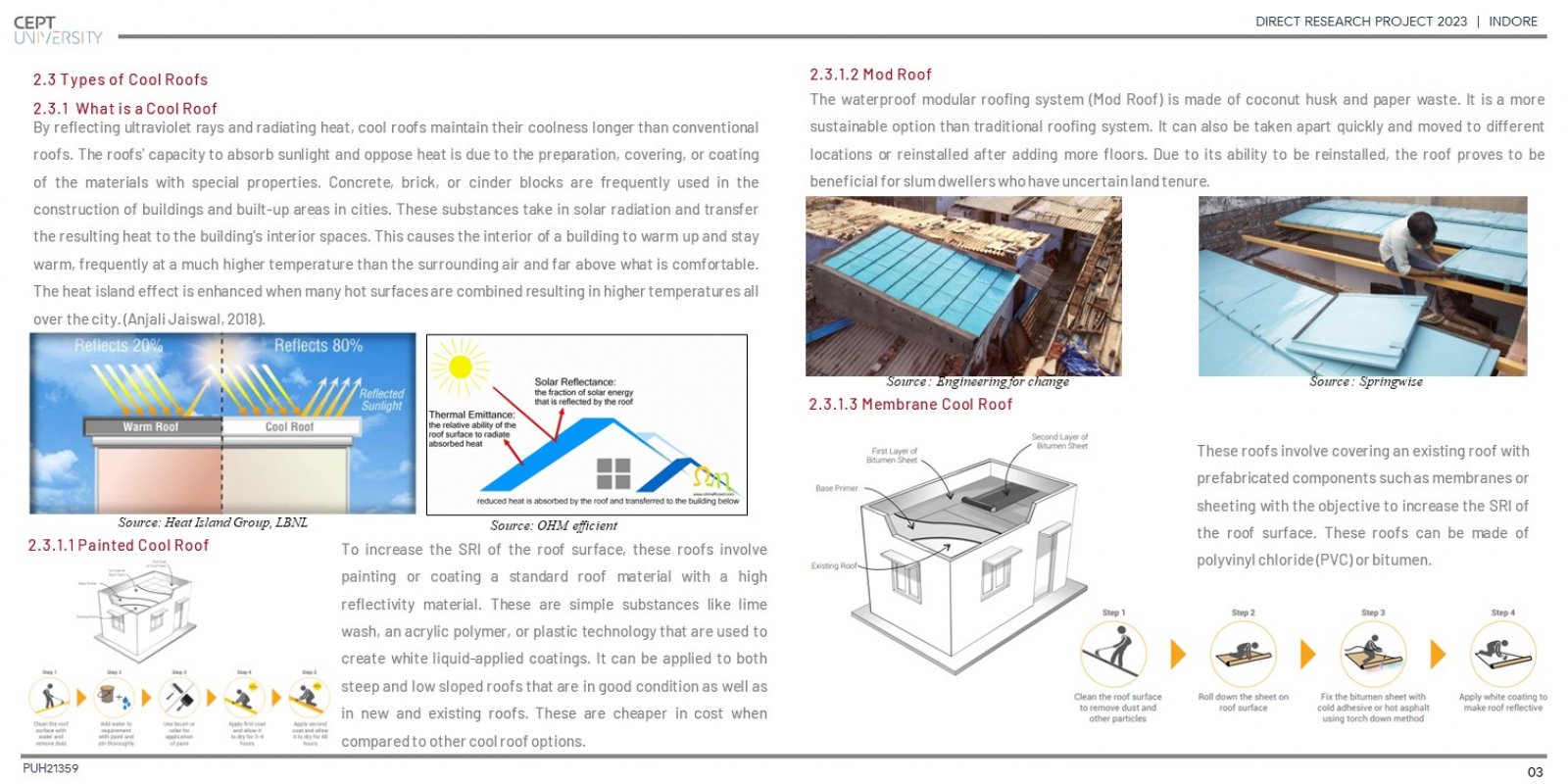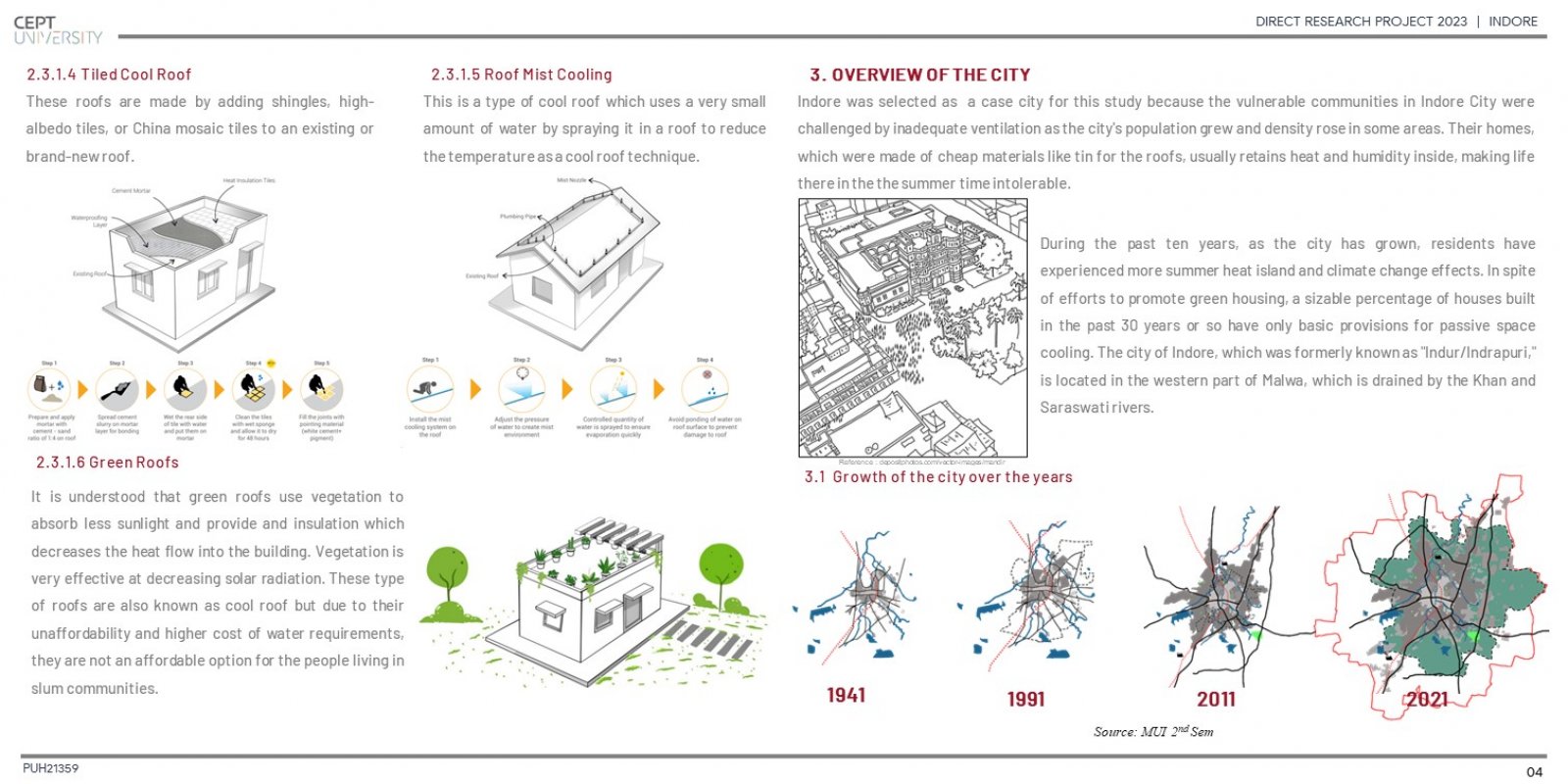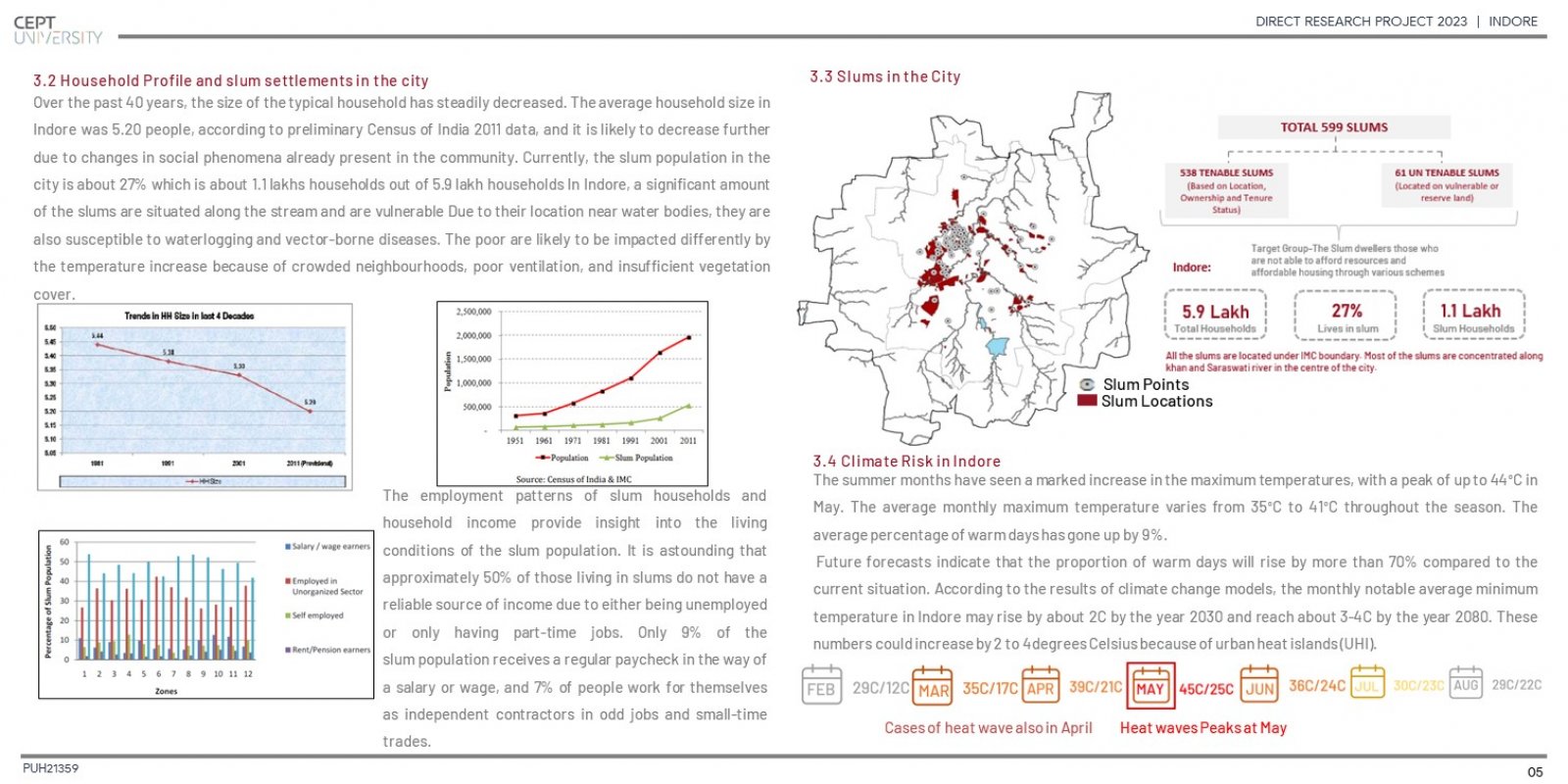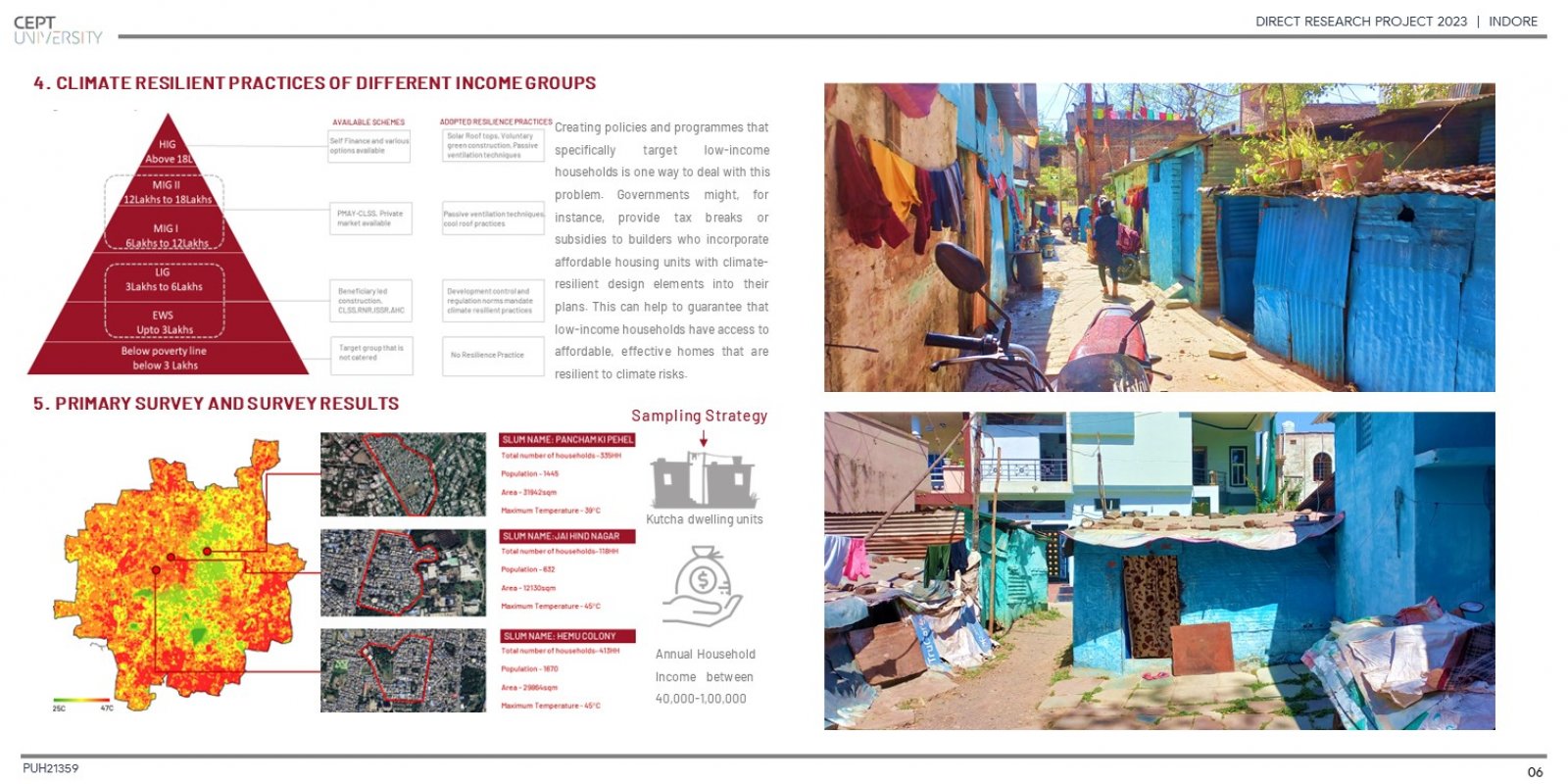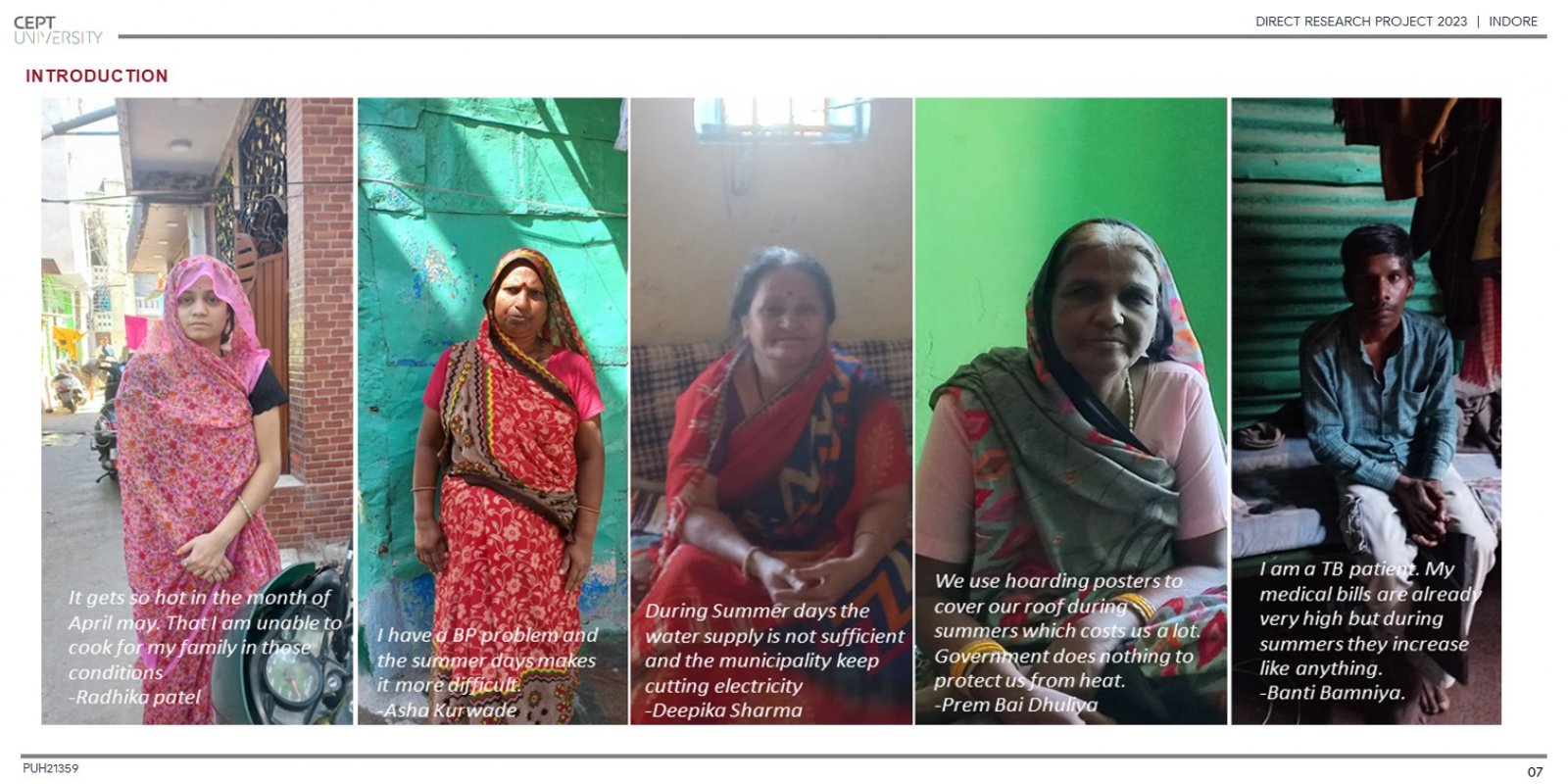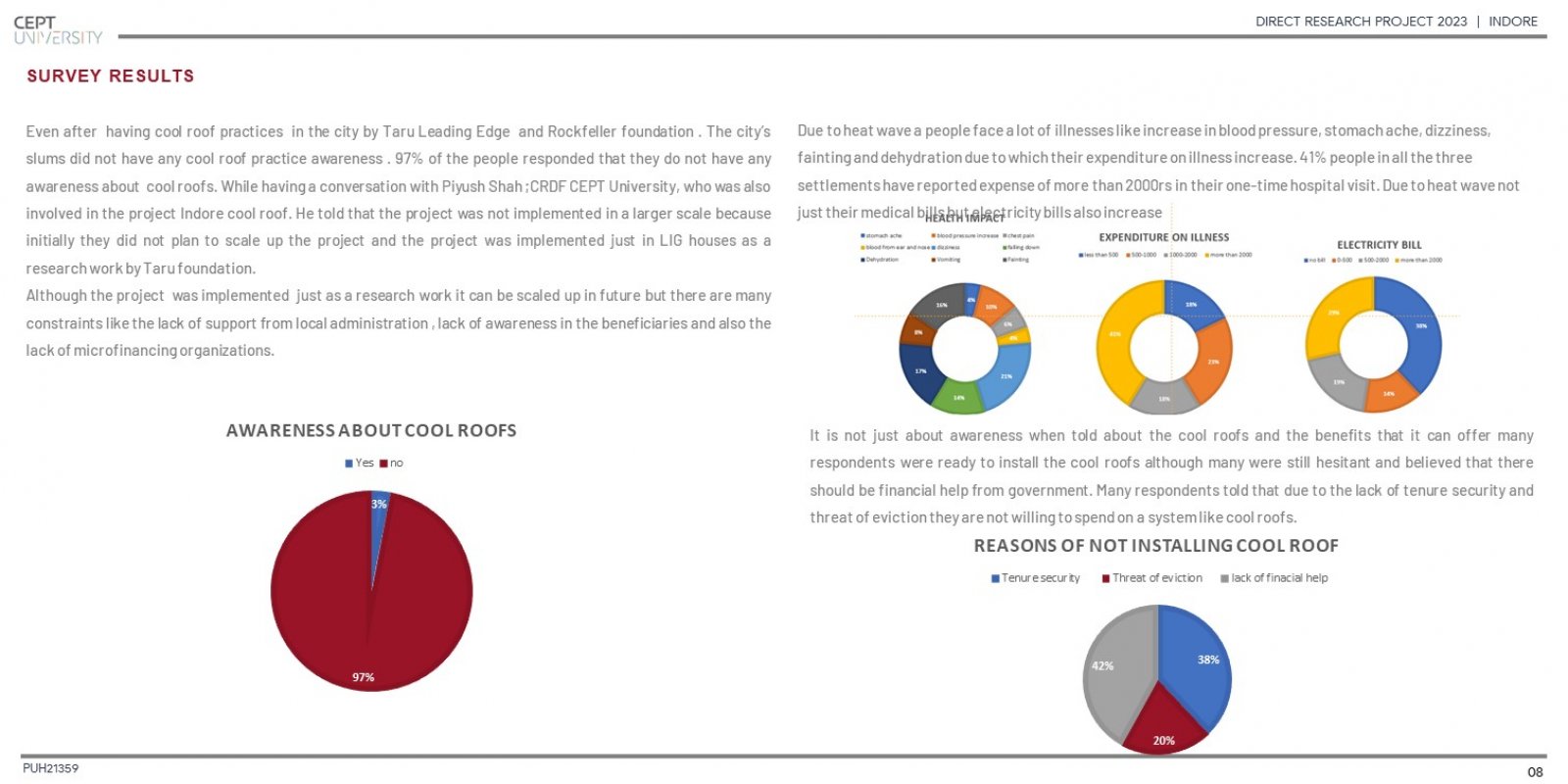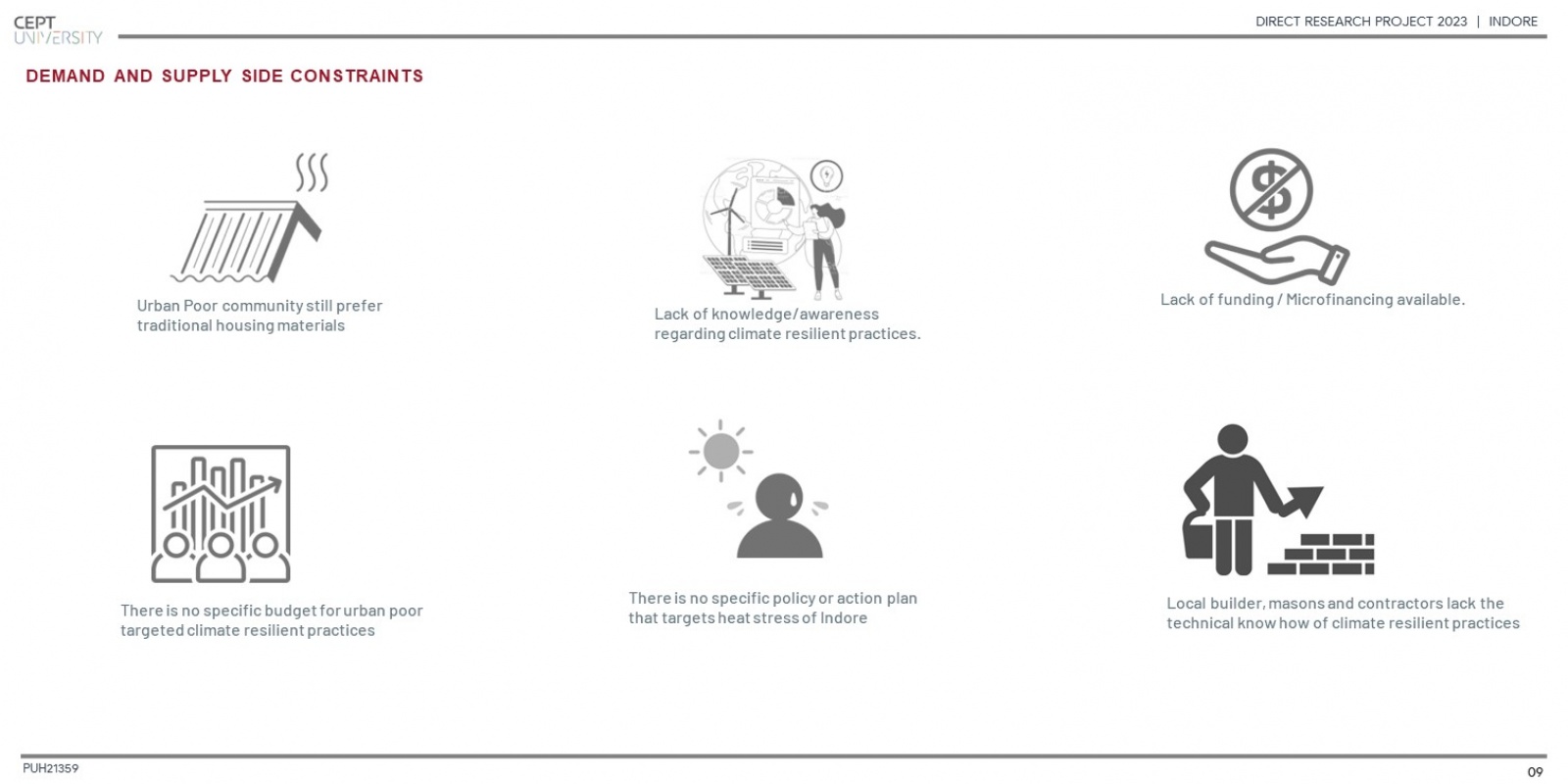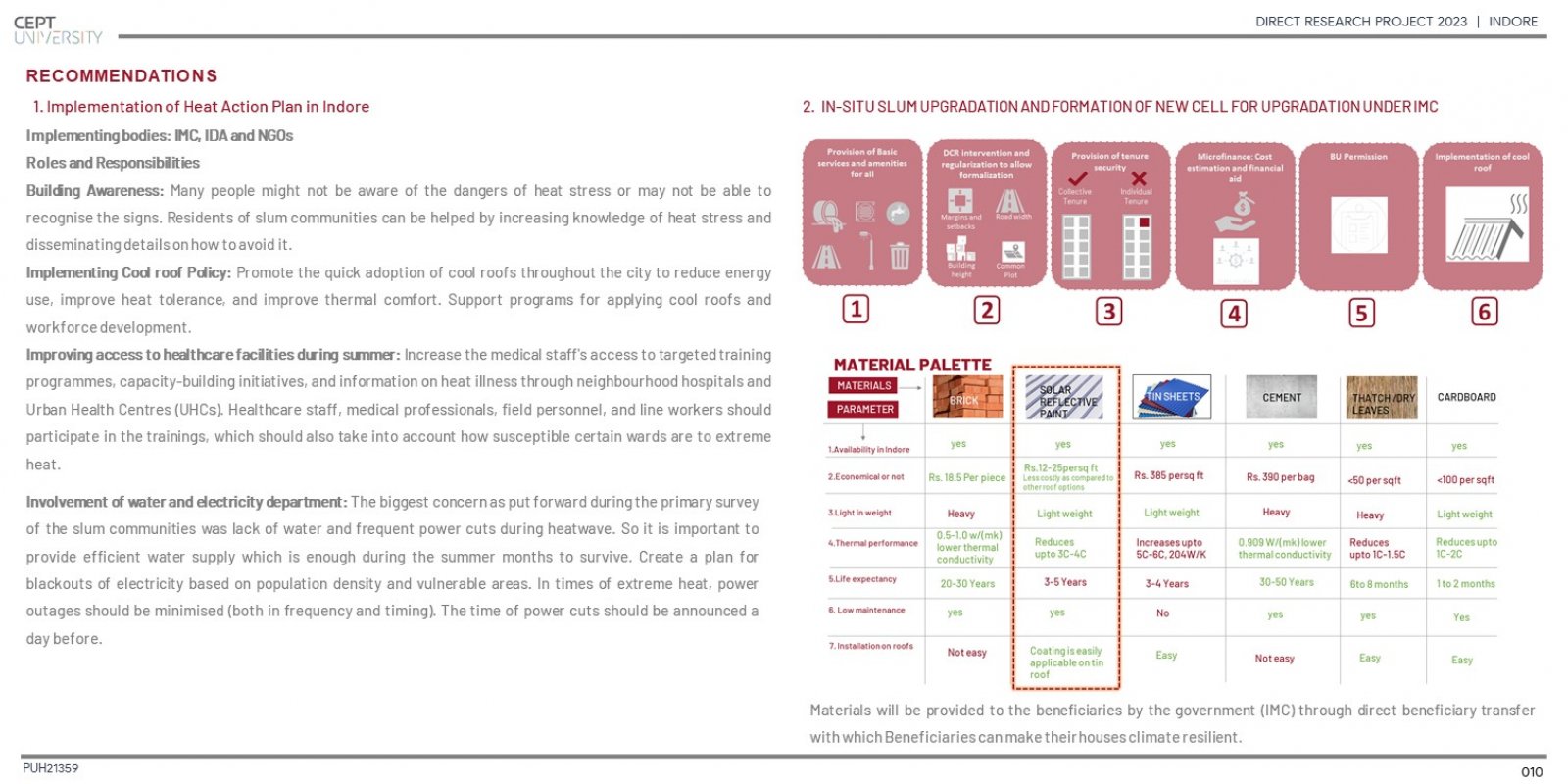Your browser is out-of-date!
For a richer surfing experience on our website, please update your browser. Update my browser now!
For a richer surfing experience on our website, please update your browser. Update my browser now!
The roof is a crucial part of any structure because it has a direct impact on energy consumption while also ensuring thermal comfort for the building's occupants. Slum Residents lack access to air conditioning, slum dwellers are among those who are most vulnerable to excessive heat, and their vulnerability is exacerbated by the fact that most of their housing is constructed of heat-trapping materials like tarpaulin, asbestos-containing cement sheets, tin sheets, and plastic. As living standards rise, so will people's needs for cooling and air conditioning, endangering the nation's ability to combat air pollution, fuel imports, and the effects of global warming.. In this report we will primarily focus on one aspect of climate change that is heat wave or heat stress. In India, extreme heat is a new threat to productivity and health specially the home-based workers who live and work in their slum dwellings. This report identifies urban poor as the vulnerable group for the issue and addresses how to combat it at an household level. Several cities have adopted Heat action plan to mitigate themselves from extreme heat conditions, but there is no as such heat action plan in the case of Indore or there is no framework to direct urban poor housing to become climate resilient.
